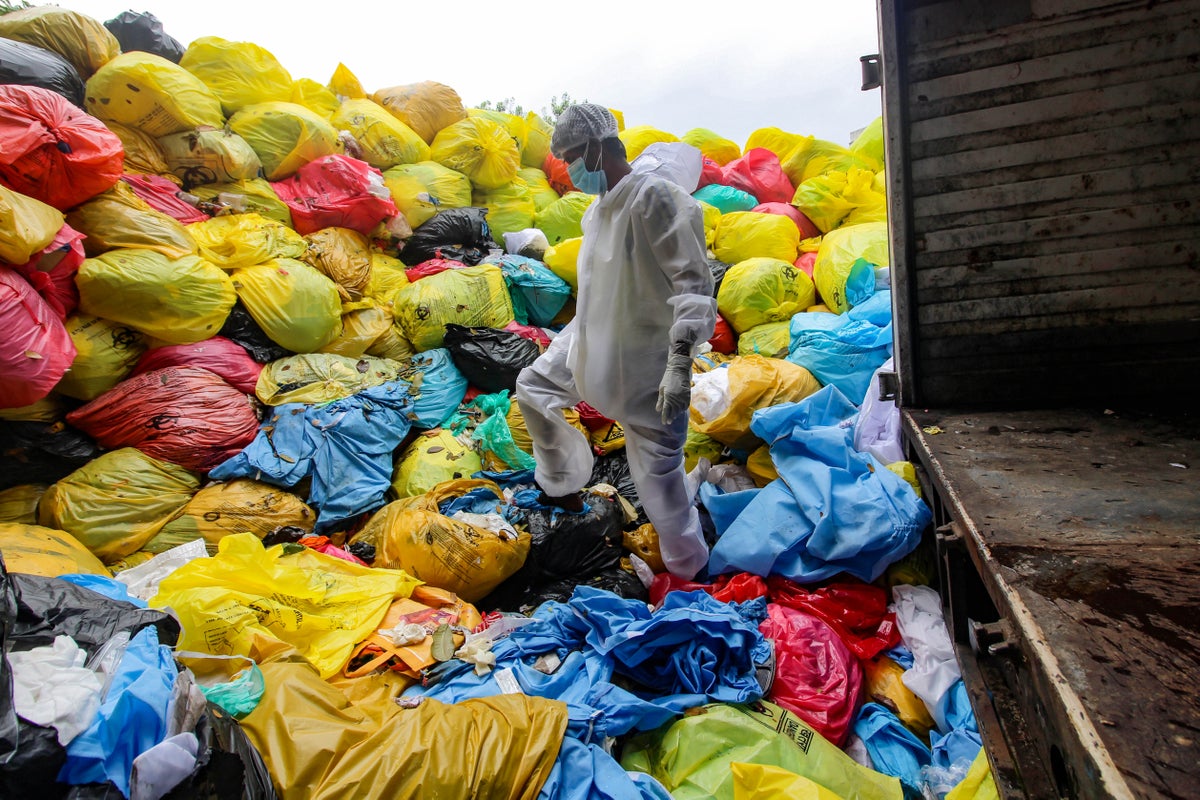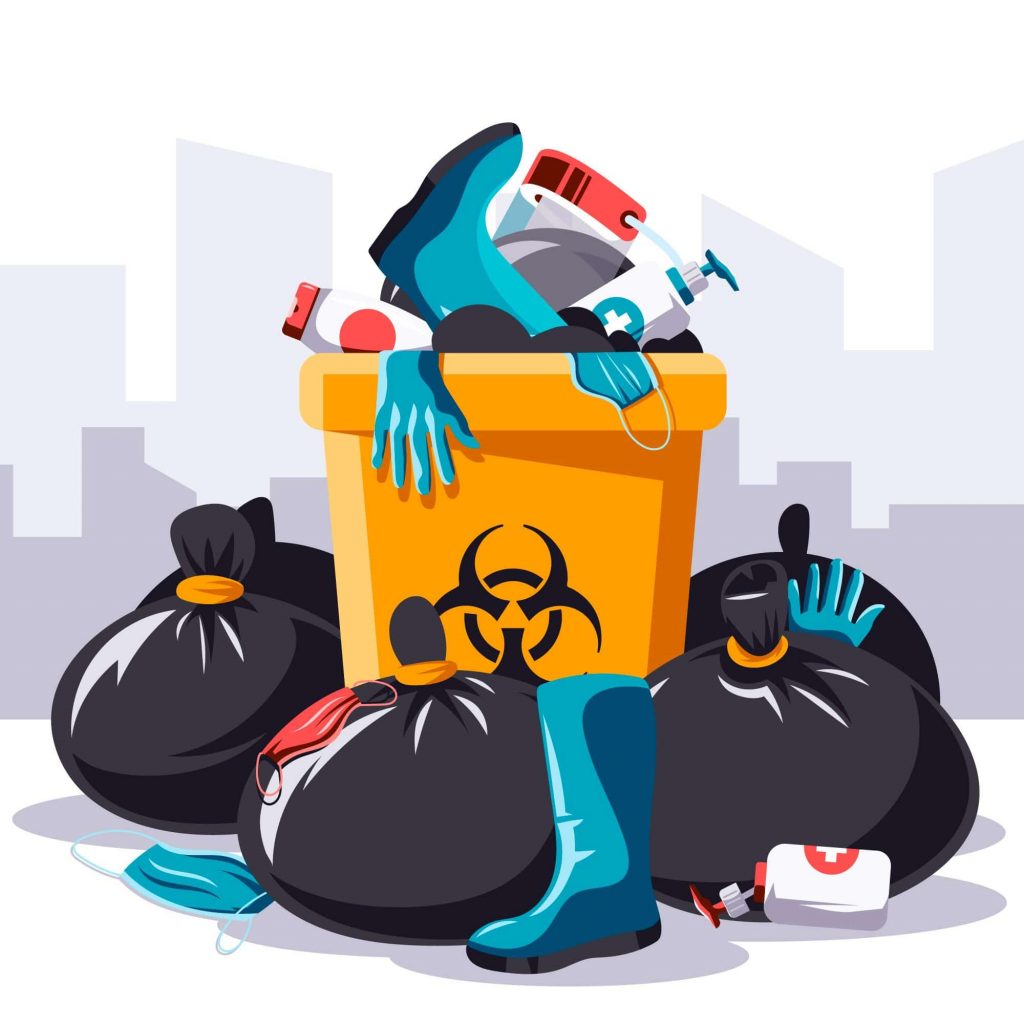Best Practices for Medical Waste Management
Clinical waste management is an essential aspect of health care centers' procedures to ensure the security of individuals, staff, and the atmosphere. Applying best practices in clinical waste administration is crucial to decrease the threats connected with dangerous waste.

Segregation and Classification
In the area of medical waste management, correct segregation and categorization are vital methods for ensuring the efficient and secure disposal of healthcare-related materials. Clinical waste is produced from different resources, consisting of healthcare facilities, clinics, research laboratories, and other health care facilities. It is composed of a broad range of things, such as needles, syringes, plasters, handwear covers, and pharmaceutical waste.
Segregation involves the organized separation of various kinds of clinical waste based on their attributes and possible risks. Sharps waste, such as needles and blades, must be positioned in puncture-resistant containers to stop injuries and the spread of transmittable conditions.
Categorization is the process of categorizing clinical waste right into different groups based on its prospective threats. These groups may include contagious waste, unsafe waste, pharmaceutical waste, and general waste. By classifying waste, healthcare centers can determine the suitable disposal techniques and make sure conformity with neighborhood laws and guidelines.
Proper segregation and classification of clinical waste not just safeguard the health and wellness of medical care employees and the basic public but additionally contribute to the total effectiveness and effectiveness of waste management. It reduces the danger of mishaps, lessens environmental influences, and advertises liable garbage disposal techniques.
Proper Storage and Classifying
To guarantee the safe and efficient disposal of clinical waste, healthcare centers must abide by appropriate storage and labeling methods. WasteX Medical Waste Disposal. Correct storage space and labeling play a critical role in keeping the stability of clinical waste monitoring systems and shielding the health and wellness and safety of healthcare employees, clients, and the general public
When it involves storage space, it is vital to have actually marked areas especially made for different kinds of medical waste. These locations must be protected, well-ventilated, and equipped with suitable containers that fulfill regulatory requirements (medical waste disposal). Partition and classification of waste must also be taken into factor to consider to avoid cross-contamination and potential dangers

Normal tracking and examination of storage space locations and containers are necessary to recognize any kind of problems or infractions. Personnel needs to be educated on appropriate storage space and labeling techniques, emphasizing the relevance of compliance with policies and procedures.
Safe Transport and Handling
Ensuring the secure and proper transport and handling of clinical waste is essential for maintaining the stability of waste management systems and protecting the health and safety and security of all included. Medical waste, which consists of products contaminated with infectious products, pharmaceuticals, and various other hazardous compounds, should be transferred in a manner that prevents leaks, spills, and possible contamination.
To accomplish safe transport and handling, several ideal methods should be adhered to. Initially, it is vital to use leak-proof and puncture-resistant containers that are specifically created for medical waste. These containers must be properly secured and labeled to protect against any type of accidental direct exposure or messing up. In addition, waste ought to be segregated based upon its nature and kind to avoid cross-contamination.
Throughout transportation, it is important to make certain that waste containers are securely fastened and stored in a steady way. Cars used for transferring medical waste must be equipped with appropriate security attributes, such as spill control systems, to minimize the danger of any kind of spills or leaks. Chauffeurs need to receive training on correct handling and emergency action procedures to successfully resolve any type of unanticipated occurrences.
Additionally, the transport and handling of medical waste ought to abide by all relevant guidelines and guidelines set forth by regional, state, and federal authorities. WasteX Medical Waste Disposal. medical waste removal. Normal inspections and audits must be carried out to analyze conformity and identify any areas for enhancement
Compliance With Regulatory Guidelines
Keeping conformity with governing standards is important for reliable medical waste management. These standards are implemented to protect public wellness and the environment by guaranteeing that clinical waste is effectively managed, treated, and disposed of. Conformity with regulatory guidelines assists to avoid the spread of infectious conditions, reduce prospective threats, and lower the overall influence of clinical waste on the setting.
To attain conformity, healthcare facilities have to stay notified about the particular guidelines regulating clinical waste administration in their jurisdiction. These laws may differ from nation to country, and even within different states or regions. It is necessary for healthcare centers to have a detailed understanding of these guidelines and to execute proper techniques and procedures to make sure conformity.
One key element of conformity is the proper segregation and labeling of various sorts of medical waste. This includes separating sharps from other waste, along with categorizing waste based on its potential dangers. Health care centers need to additionally guarantee that medical waste is kept in proper containers which official source these containers are correctly identified and sealed.
Additionally, conformity with regulatory guidelines calls for medical care centers to develop appropriate training and education and learning programs for personnel associated with medical waste monitoring. This includes offering training on waste partition, taking care of, and disposal treatments, in addition to the appropriate use personal protective equipment.
Regular monitoring and audits are likewise important to ensure ongoing conformity with regulative standards. This involves carrying out regular inspections of waste storage space areas, documenting waste management treatments, and keeping records of garbage disposal.
Effective Disposal Methods
Medical care centers have to employ reliable disposal techniques for proper management of clinical waste. Improper disposal of medical waste can posture serious health and wellness and ecological dangers. There are numerous techniques that can be used to effectively throw away clinical waste, making certain the security of medical care employees, clients, and the basic public.
One frequently used approach is incineration. Incinerators can securely burn medical waste at high temperatures, minimizing the volume and ruining any potentially hazardous virus. Incineration can be costly and might launch dangerous pollutants into the air if not appropriately regulated.
Another approach is autoclaving, which involves subjecting the waste to high-pressure heavy steam. This process eliminates germs, infections, and other microbes, rendering the waste safe for disposal in routine waste streams. Autoclaving is a effective and eco-friendly method, however it needs specific tools and trained employees.
Chemical disinfection is also made use of sometimes, where liquid chemicals are applied to the waste to decontaminate it. This technique is much less typically utilized as a result of concerns regarding the performance of chemical sanitation and the potential for chemical residues to contaminate the setting.
Along with these methods, health care centers ought to likewise apply appropriate partition, product packaging, and labeling of medical waste to ensure its risk-free handling and disposal. Normal training and education of team on proper waste monitoring techniques are vital to keeping reliable disposal methods.
Conclusion
Finally, executing finest methods for medical waste administration is necessary for ensuring the safety of healthcare workers, clients, and the atmosphere. By correctly categorizing and segregating waste, saving and classifying it appropriately, ensuring secure transport and handling, adhering to regulatory standards, and utilizing efficient disposal techniques, healthcare centers can efficiently take care of and decrease the dangers connected with medical waste. It is important for health care companies to adhere and prioritize to these best methods to maintain a lasting and safe medical care setting.
Clinical waste administration is an essential facet of medical care centers' procedures to make certain the safety of clients, team, and the setting. Implementing ideal methods in medical waste management is important to minimize the threats associated with unsafe waste. These groups might consist of transmittable waste, unsafe waste, pharmaceutical waste, and general waste.In conclusion, implementing ideal techniques for medical waste management is essential for ensuring the security of healthcare employees, clients, and the environment. By properly segregating and classifying waste, keeping and classifying it appropriately, guaranteeing secure transportation and handling, abiding with governing standards, and using reliable disposal techniques, healthcare centers can efficiently manage and decrease the dangers associated with clinical waste.